Keep your base engaged without going broke
No matter what industry you’re part of, email marketing is essential to success. Whether you’re in SAAS, an indie author, or you sell homemade soaps, keeping track of your customers and keeping them coming back for more purchases can make or break your business.
On the other hand, you don’t want to go bankrupt paying for email marketing services. We have compiled a list of the best free email marketing services based on their subscriber limits, their send limits, and much more. This guide will help you figure out which one of these services best fits your needs.
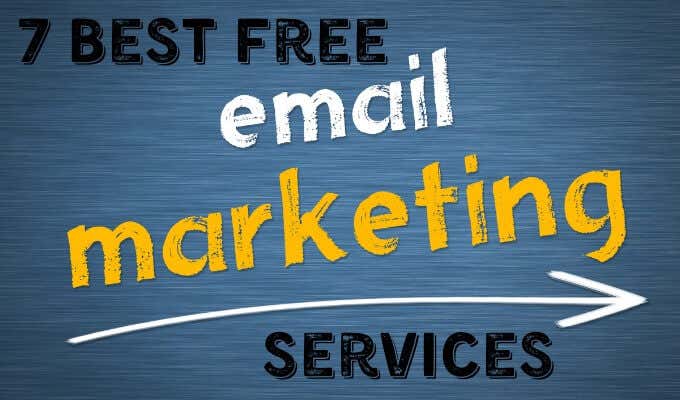
7 Best Free Email Marketing Services
1. Omnisend
From a purely numbers-oriented standpoint, Omnisend is by far the best option out there. Not only does the free plan allow you to send up to 15,000 emails per month, but it allows you to send as many as 2,000 per day. There is also no limit to the number of subscribers you are allowed to have.
Omnisend has a lot of eCommerce integrations that allow you to pull products from an online store straight into the email, as well as send out discount codes, scratch cards, and more. You can easily perform A/B testing to find out what copy has the highest conversion rates.
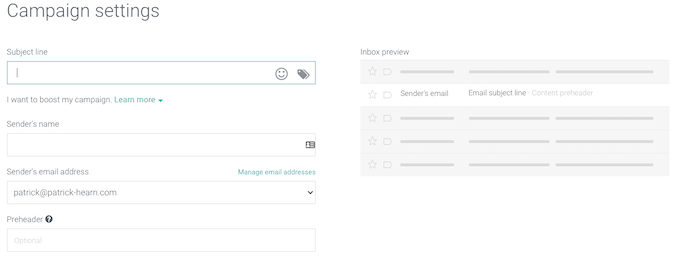
In order to make it easy on mobile users (which is where most people read their email today), Omnisend offers mobile-friendly email templates. You can make creative signup forms and landing pages and even send out emails for order confirmations and abandoned carts.
If you run an eCommerce shop through a service like Shopify or something similar, Omnisend is definitely worth considering. You can try a 14-day free trial of all of the premium features, too.
2. Sendinblue
Sendinblue is another great free email marketing service that already has built-in protections. The company is based in France, which means anything you do through Sendinblue will comply with GDPR guidelines. The free plan is powerful, with numerous options for reaching your subscribers.
To start with, you have no subscriber limit. You can send up to 9,000 emails per month, but you are limited to only 300 per day. While Sendinblue isn’t the best option if you want to send out a huge email blast, it’s fantastic for drip campaigns. It also has an impressive drag-and-drop editor for designing marketing emails.
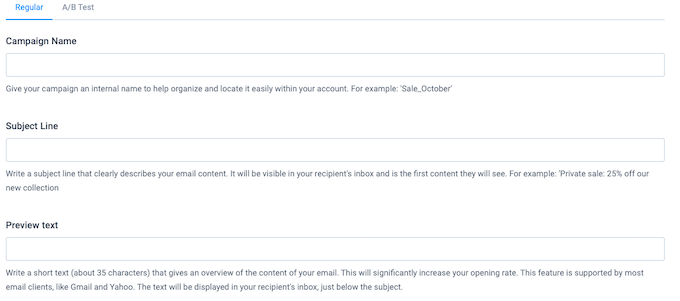
Sendinblue uses heat mapping to track where readers are focused and provides A/B testing options to help you better optimize your marketing campaigns. It integrates easily through Shopify and Salesforce and even allows for SMS marketing to be linked to your primary campaigns.
If you use WordPress, Sendinblue is a fantastic option thanks to a WordPress plugin that makes it easy to manage everything from your dashboard. If you do decide to upgrade, the first paid tier is only $25 per month for 40,000 emails and no daily sending limit.
3. Hubspot
Hubspot is a great service for any business owner. You’ll find a vast amount of content and educational material available on the site, a suite of email marketing tools, SEO information, and more. Hubspot can help business owners get started in no time at all.
The email marketing system is free, although there are paid tiers. The free tier provides up to 1 million subscribers and up to 2,000 emails per month. It’s incredibly easy to use thanks to the robust drag-and-drop editing system. Even if you aren’t a graphic designer, you can create beautiful email forms with just a little practice.
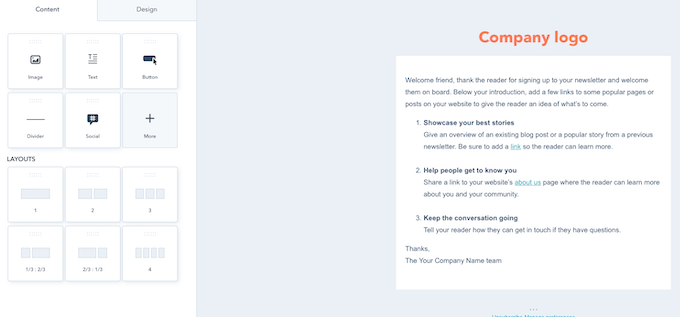
There are also quite a few pre-made templates if you don’t want to try making anything yourself. There is even an “email health” tool to manage your sending reputation and ensure you aren’t being flagged as a spammer.
The only downside to the free Hubspot service is that their branding will be included on all emails sent from the free tier. If you upgrade, you can have many more email lists and access to a lot of analytic tools to help measure the success of your campaigns.
4. Sender
Although Sender doesn’t have an unlimited subscriber count, it gives users up to 2,500 subscribers on the free plan–more than enough for someone just starting out. The free plan also allows up to 15,000 emails per month with no daily sending limit.
If you decide to upgrade at some point, the first tier is only $10 per month and allows for up to 5,000 subscribers and 60,000 emails per month. Not a bad deal at all. What makes Sender truly powerful, however, is its compatibility.

The service has plugins for most popular content management systems, and it makes it easy to convert videos into GIFs inside emails to keep their size down. Sender uses strong analytics tools to allow you to see how your campaigns perform, and you can tie Google Analytics into it, too.
Sender is a great option because of how powerful it is, but also because of how inexpensive it is to upgrade over time. If you find yourself needing a premium tier, the pricing stays low as you grow.
5. Mailchimp
Mailchimp is one of the most popular free email marketing services and often the first one that users turn to. The free Mailchimp plan provides you with 2,000 subscribers and a daily send limit of 2,000 emails, as well as a monthly limit of 10,000 emails.

Free users also have access to 7 marketing channels, single email automations, 5 different email templates, and a marketing CRM. Features like A/B testing and custom branding is restricted to paid users only, but if you decide to upgrade the first plan starts at $10 per month.
Mailchimp’s creation platform makes it easy to design attractive emails that will capture readers’ attention, but be warned that there’s a small banner ad in every email you send through the free plan. On the other hand, you can automate emails for things like order confirmations or abandoned cart reminders.
6. MailerLite
MailerLite’s free plan has a lower subscriber limit at just 1,000 emails, but it allows up to 12,000 emails per month. What makes MailerLite one of the best free email marketing services is the amount of features that come with the free plan.
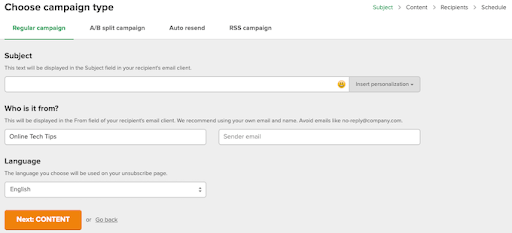
The platform offers powerful tools for sending out surveys, creating landing pages, and designing email campaigns. The drag-and-drop editor labels individual elements in an easy to understand way, such as “2 buttons,” “3 prolducts,” “spacer,” and more. It also includes a small thumbnail image to illustrate what it will look like once inserted into the campaign.
The free plan gives access to most all of the essential features, but advanced tools like heat mapping and A/B testing are limited to the premium plan. The first tier is $10 per month for unlimited emails (and you can pay annually rather than monthly to save 30%.)
7. Mailjet
When you sign up for Mailjet, it prompts you to enter a credit card and warns that accounts without a card on file are restricted to the free plan: 6,000 emails per month and only 200 per day, but there is no subscriber limit.
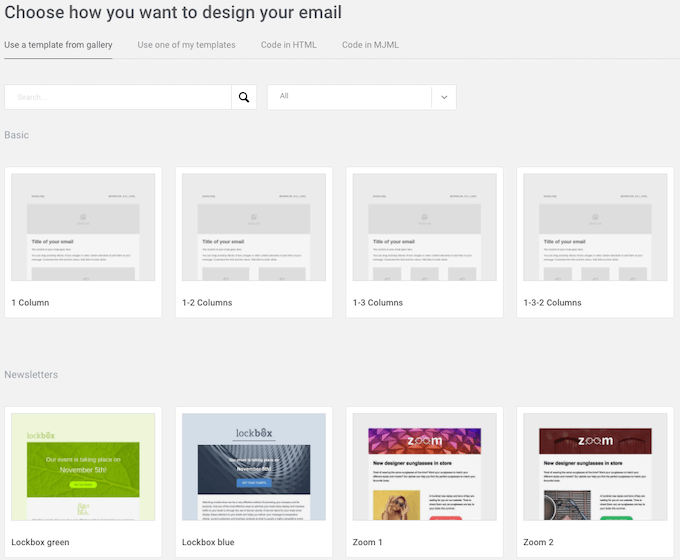
Mailjet walks new users through every step of the creation process and makes suggestions to improve the success of campaigns. For example, the service recommends users authenticate their domains to avoid being auto-flagged as spam.
The email builder provides a lot of variety. Users can choose from one of numerous templates and newsletters from which to base their email, or they can use their own template. It’s also possible to code the email in HTML for precise, exact control over how you want the email to appear and behave.
Tips For Email Marketing Success
These 7 free email marketing services can help you get started reaching out to customers, but you should also keep a few additional things in mind before you get started.
First, make sure your sender address—the one recipients see in the “From” field—is your business account. Sending from a Gmail account or other free email account can result in your message being flagged as spam.

Know your audience. Research how other campaigns operate and how often emails go out. Sending too many emails in a day or a week will turn away readers and result in an increased loss of subscribers.
Test different campaign styles. It isn’t likely that you’ll hit a winning formula right away. Take advantage of A/B testing tools to try out different headlines, formats, and other elements in your campaigns until you discover what most resonates with readers.
Take advantage of automation. If you run an eCommerce shop, automated emails to remind users of abandoned shopping carts can increase sales. Welcome emails sent to new subscribers can build loyalty. Use automation services to ensure customers and readers are reached without immense effort on your part.





